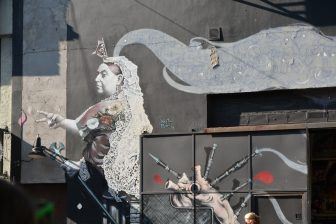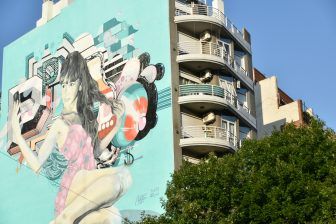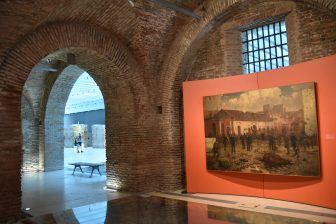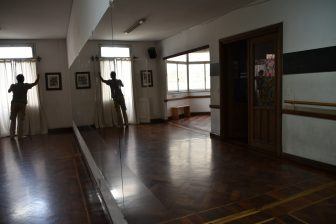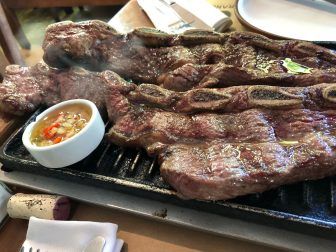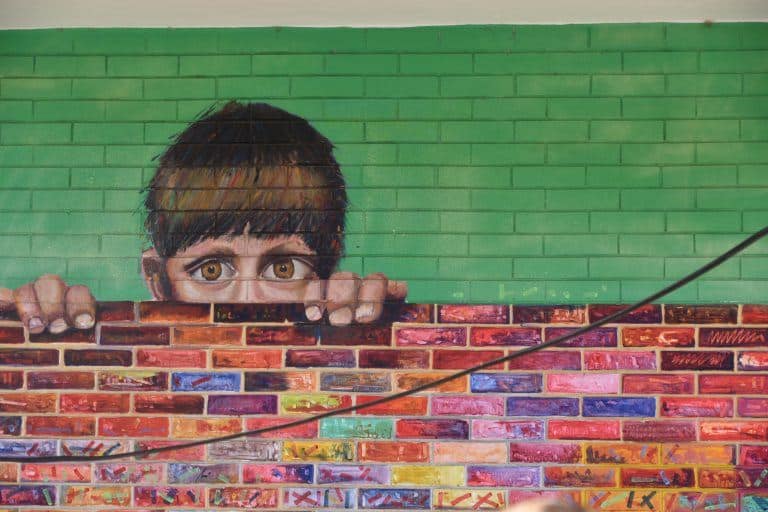
[ Mar.2018 ] On our eighth day in Buenos Aires in Argentina, we joined the Palermo graffiti tour in the afternoon.
This tour led us to look at many different works of graffiti – or murals – in this area and it cost 200 pesos (about £6, €7, $8), which was the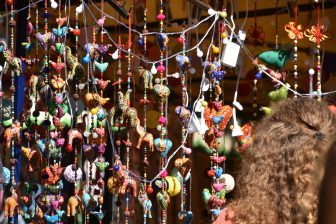 same as the La Boca tour the day before.
same as the La Boca tour the day before.
It started from Plaza Serrano where they hold a craft market every weekend.
The guide this time was called Mariana who was 26 years old.
The participants were mostly young people.
According to Mariana, the people who started doing graffiti were rich young people.
They went to New York and saw the graffiti there and thought “Cool!”, so they copied it in this city.
The graffiti developed into mural-style art in 2001 when Argentina went into an economic crisis.
During the crisis, citizens could not get their money out from the banks.
Mariana, who was 9 years old at the time, remembers that she went to the Casa Rosada, the President’s Office, with her parents and protested by hitting spoons together.
The president at the time made a cowardly escape by helicopter, apparently.
Around that time, someone started painting on the walls in order to make people smile, even if only momentarily.
So there were many funny pictures or satirical political pieces at first and, gradually, the beautiful artistic pictures started to appear.
At first, the murals were the enemy of the authorities, but now, many 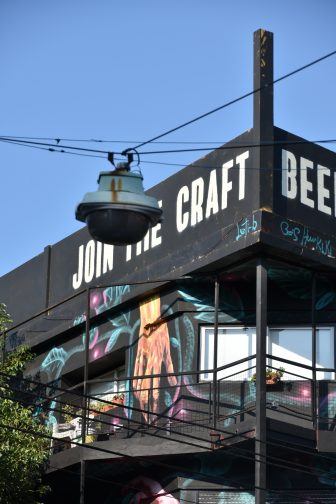
Especially the micro breweries which suddenly increased in number in Palermo, of which there are now 65 that have interesting murals.
One of the reasons that people started liking the murals is that people generally accept the unwritten rule that nobody can draw ugly graffiti on top of them.
In fact, we saw some typical graffiti on the plain walls just next to the lovely murals.
At the moment, in Buenos Aires there are a little more than 50 mural artists.
Among these 50, the female artists only make up about 15%.
One of the reasons for this is that although the murals are recognised as art, they are still painted mainly during the night in secret and women tend to get harassed late at night.
When you see the work of famous painters, such as Van Gogh or Monet,
It is the same for the mural artists, apparently.
Each artist’s work has a strong character so that people can remember the artist.
They are attention seekers, so they usually write not only their signatures but also their Facebook or Instagram accounts at the bottom of their work.
Many of the murals have meanings.
For example, the mural of a face with the brain coming out of the eyes is meant to express the observation that, in the modern age, people have less eye contact.
Mariana pointed out one mural with the face of an electro-pop musician and said that it was painted by a new talent who is only 23 years old. He is very good at shading in a portrait using only aerosol cans, which is apparently very difficult.
Listening to her explanations, we walked around for about 2 and a half hours in Palermo.
The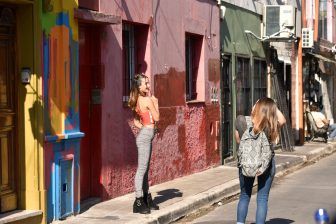
It was a picture of a girl taking selfies.
This was apparently painted by two artists and it took only 5 days to complete.
It was an example of the city authorities project.
Apparently at the moment there are 15 such projects in the city.
By the way, while we were walking we saw one pretty girl posing for a photographer.
Mariana explained that historically in Argentina, when girls turn 15 years old, they make her debut in society.
Ordinary people copy this custom and they take photos of girls when they become 15.

